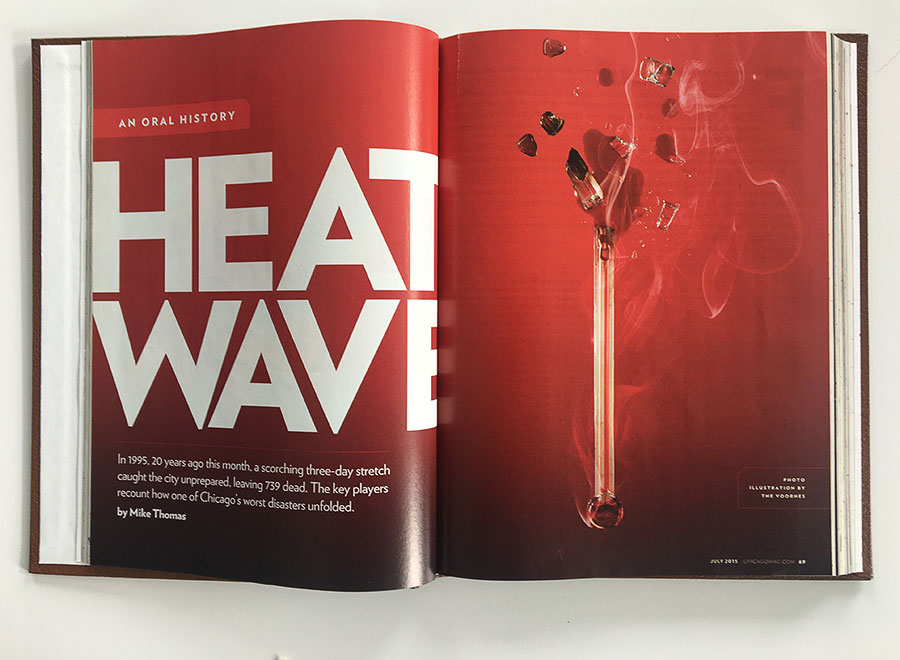
July 12–16, 1995
Seven hundred thirty-nine dead. That so many could have perished in a modern city in a First World country defied belief. Even as bodies piled up at the Cook County morgue — many of them elderly residents of the South and West Sides — city officials seemed unable to grasp the gravity of the situation: “It’s very hot … but let’s not blow it out of proportion,” Mayor Richard M. Daley said as temperatures started to soar. Improvements have since been made in the city’s heat-emergency response protocols, but for many of those who lived through July ’95, confidence in the system was permanently undermined.
From the Archives

For our July 2015 oral history, Mike Thomas interviewed first responders, meteorologists, ER doctors, and, among others, the mother of one of the tragedy’s youngest victims, a 3-year-old who’d been left in a car by a daycare worker.
“My husband called me at work downtown and said they had to take little Geno to the hospital … then he said something like, ‘Go to your mother’s house.’ So my boss and I took a cab to my mother’s house, but nobody was there. I called my husband again, and he said, ‘I’m sorry. He’s gone.’ Just like that. I fell on the floor and was beating the floor, screaming. There’s just a tremendous hole, a pain, and you just cry until you can’t cry anymore.”


